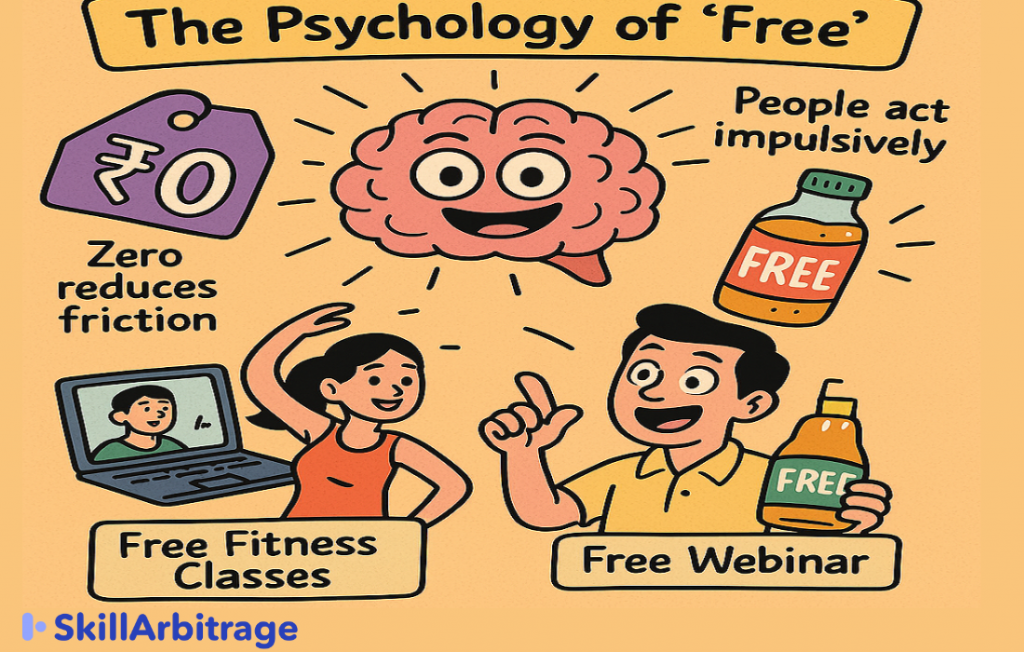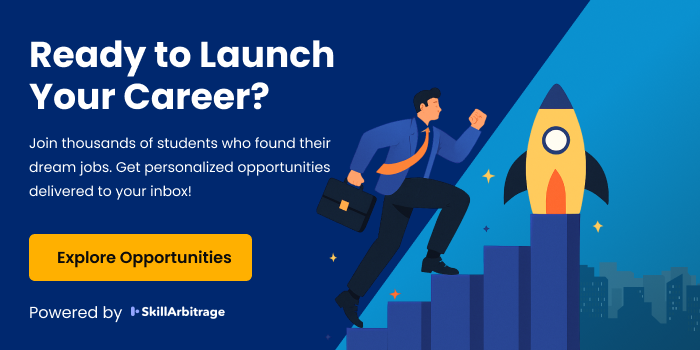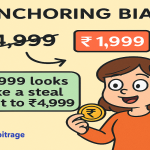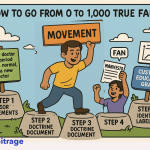Did you know that just adding the word “free” to your offer can massively boost conversions, even if the value is tiny? It is called the Zero Price Effect, and it is one of the most powerful (yet often misunderstood) tools in a content marketer’s arsenal. In this blog, we will break down how Indian writers, strategists, and marketers can harness this psychological trigger to craft content and campaigns that make readers feel like they would be losing out if they didn’t click.
Table of Contents
Introduction
It’s a hot Sunday afternoon in Delhi, and you’re stuck in mind-boggling traffic, drenched in sweat, and slowly getting irritated while waiting at a red light.
Suddenly, an ice cream seller walks up to you, smiling, and asks, “Would you like a free scoop of ice cream?”
You say yes before thinking. That single scoop changes your mood. It tastes better because it’s free. You didn’t need it. You didn’t ask for it. But you are already telling your friends and sharing on social media platforms how your mood was elevated in a hot and sweaty Delhi afternoon.
Now, imagine a second scenario. You are considering buying bangles from a street corner cart selling junk jewelry. Suddenly, the owner offers you a small trinket as a gift. You feel valued and happy. There are very high chances that you will also complete the purchase, which might be ten times the price of the trinket gifted.
This is how “free” works. It hooks you with happiness. And it is quite effective in the Indian market, where consumers continuously seek value for money.
Most consumer behavior is driven by emotion rather than logic and conversion driven by the happiness hook as we saw is one of the prime examples.
If you’re an Indian content writer or marketer, understanding this emotion-driven behavior can transform how you write, design offers, and convert users. Because ₹0 isn’t a number — it’s an emotional trigger.
The psychology behind the zero price effect
Why do people get excited about free things?
Because “zero” doesn’t just mean cheaper. It means no risk, no effort, all gain.
In a recent study, researcher Dan Ariely offered participants a choice: pay 26 cents for a fancy Lindt truffle or 1 cent for a regular Hershey’s Kiss. Most picked the truffle. But when prices were lowered by one cent, 25 cents vs. 0, people rushed to buy the Hershey’s.
Same price gap, 1 cent, but completely different behavior. Because zero is a magic number!
That’s the Zero Price Effect.
Our brains treat free offers like a separate category. Zero triggers a unique neural response, bypassing our usual cost-benefit analysis because it eliminates the fear of loss. This makes ‘free’ feel like pure gain, driving impulsive decisions.
Why does ‘free’ work better than cheap
It may sound strange, but it is true. According to popular perception, a product for ₹99 might seem affordable. But the same thing at ₹0 is irresistible.
Here’s why:
The moment you remove price resistance, you remove mental friction. That’s the magic lever for first-time users. The best Indian brands use it with deadly effectiveness. Here is how renowned brands harness the power of free.
The freemium funnel: hooking audiences with ₹0
To see the Zero Price Effect in action, let’s explore three Indian brands that use “free” to hook audiences and drive conversions.
1. CultLive by Cult.fit: free fitness classes that build habits
Cult.fit, a leading Indian fitness platform, has mastered the art of using free offerings to build a loyal user base.
Its CultLive service offers live-streamed fitness classes, tapping into India’s growing demand for accessible, home-based workouts.
How it works:
CultLive invites users to try unlimited free live fitness classes for a limited period (e.g., a 7-day trial). The free offer eliminates the risk of committing to a gym membership, appealing to users who want to test the waters.
During the trial, users experience high-energy workouts led by professional trainers, fostering a sense of community and routine. Cult.fit uses in-app nudges, such as notifications like “Save your workout streak with CultPass!” or “Join 10,000+ fitness enthusiasts on CultPass,” to encourage users to upgrade to a paid subscription.
The transition feels natural because users have already built a habit, making the paid CultPass, a monthly subscription for unlimited classes, seems like a logical next step.
Key takeaways:
- Habit formation drives conversion: Free trials that encourage daily engagement (e.g., workouts) create habits that make users more likely to pay to continue.
- Use social proof: Highlighting user numbers (e.g., “10,000+ fitness enthusiasts”) builds trust and FOMO.
- Seamless upsell: Nudges should feel like a continuation of the free experience, not a hard sell.
2. CRED rewards: turning bill payments into free points
CRED, a Bengaluru-based fintech platform, has redefined how Indian consumers view credit card bill payments. By offering free reward points for routine transactions, CRED taps into the Indian love for “paisa vasool” (value for money), making users feel they’re earning something extra without effort.
How it works:
CRED offers free reward points every time users pay their credit card bills through the app. These points can be redeemed for discounts, exclusive experiences, or partner offers, creating a sense of instant gratification.
The psychology is simple: paying bills feels like a chore, but earning free points makes it rewarding. Once users are hooked on points, CRED upsells premium memberships (e.g., CRED Pay) or exclusive partner deals, such as discounts on luxury brands.
The free points act as a low-risk entry point, while the premium upgrades feel like a deserved upgrade for loyal users.
Key takeaways:
- Gamify the free offer: Adding elements like points or contests makes free feel fun and engaging.
- Leverage reciprocity: When users feel they’ve “earned” something free, they’re more likely to invest in premium features.
- Align with lifestyle: Tie free offers to everyday tasks (e.g., bill payments) to ensure frequent engagement.
3. SkillArbitrage free webinars: converting curiosity into courses
SkillArbitrage, an Indian EdTech platform, empowers freelancers and professionals to tap into global opportunities. Its free webinars are a masterclass in using scarcity and value to convert curious learners into paying customers, making it a perfect example for content creators and marketers.
How it works:
SkillArbitrage offers live webinars on topics like “How to Land Global Freelancing Clients” or “Secrets to Scaling Your Side Hustle.” These webinars are free but marketed with scarcity (“Limited seats available!”) and value (“Learn insider tips from industry experts”).
During the session, attendees receive actionable advice, success stories, and a glimpse of what’s possible with SkillArbitrage’s paid courses. In the end, a special course discount is offered, often with a time-sensitive CTA like “Enroll within 24 hours to save 20%.”
The free webinar builds trust by delivering real value, while the urgency and success stories nudge attendees toward paid programs. Follow-up emails reinforce the offer, ensuring conversions don’t stop at the webinar.
Key takeaways:
- Deliver immediate value: Free offerings must solve a micro-problem (e.g., one freelancing tip) to build trust.
- Create urgency: Time-sensitive discounts or limited seats drive immediate action.
- Follow up relentlessly: Automated emails or WhatsApp messages keep the conversion funnel active.
These brands show that “free” isn’t about giving away value. Instead, it’s about building trust and guiding users toward paid offerings with intention and strategy.
Interested in applying the same strategy to sell your products? Use these fantastic follow-up templates.
Copywriting templates: turning freebies into paying customers
Want to know the biggest mistake most marketers make? They give away free stuff and forget the follow-up.
Here are 5 plug-and-play copywriting templates that transition your freebie users into committed buyers:
Template 1: The value stacking follow-up (offered after a demo class by an upskilling EdTech)
Subject: You’ve only scratched the surface. Ready for more?
Body: You took the first step with our free session. That already sets you apart. But imagine access to mentors, tools, and deep-dive strategies tailored just for you.
Your real growth starts here.
CTA: Unlock Full Access
Template 2: The scarcity countdown (offered after a free trial of a platform)
Subject: Your free trial ends in 24 hours
Body: We’re glad you explored our platform. But your trial expires soon. Want to keep your momentum?
Upgrade now and continue where you left off — no interruptions.
CTA: Continue Watching/Learning
Template 3: The reciprocity appeal (offered after a free demo class)
Subject: We shared our best. Would you support us?
Body: Our free sessions were built with love. If it helped you gain clarity or confidence, consider joining as a paid member. Your support keeps this mission alive.
CTA: Become a Patron
Template 4: The comparison close (offered after landing pages and ads have already explained benefits)
Subject: ₹99 = One Coffee. Or Career Growth.
Body: You spend more on snacks than what it takes to unlock premium features. For just ₹99, get unlimited access to tools that actually move your career forward.
CTA: Let’s Go Pro
Template 5: The achievement reminder ( offered after a certail ‘level’ is completed)
Subject: You’ve outgrown “beginner.” Time to level up.
Body: You’ve already achieved [milestone]. That proves you’re serious. Why not join our advanced track? Tools, templates, mentors — everything you need to win faster.
CTA: Join the Inner Circle
But what about the free strategy itself?
I have got you if you want to craft your free strategy from scratch, for free!
Crafting your own “free” strategy: a 5-step guide
Whether you’re a solo creator, course seller, or content team member, here’s your free-to-paid playbook:
Let’s see what happens when we actually apply this strategy to a small brand.
Applying the 5-step strategy to a local orange juice brand
Let’s say you’re marketing a new cold-pressed orange juice brand in India.
Here’s how to apply the 5-step free strategy we discussed earlier:
Step 1: Choose the freebie
You need to decide on one freebie that you can offer without destroying your profit margins.
Freebie idea: One free 200 ml trial bottle of orange juice
Why this works:
- It solves a micro-problem instantly: thirst + curiosity
- It’s tangible, consumable, and delivers immediate sensory satisfaction
You have already gained brownie points by generating good vibes for your brand
Step 2: Frame the freebie emotionally
Don’t offer the freebie without fuss. Don’t just say:
“Get a free juice sample.”
Say:
“Your first bottle is on us — because tasting is believing.”
Or:
“Hot day? We got you. One chilled orange juice bottle, free — just for trying us out.”
This adds emotion + context + generosity — all critical triggers for impulse action.
Step 3: Define the next step (path to paid)
After the free bottle, don’t just thank them. Remember that offering something free is just your way of ensuring conversions.
Offer a clear, low-friction upgrade path:
- “Loved the taste? Subscribe and get 4 bottles every weekend — starting at just ₹149.”
- “Buy your week’s supply now and save 30% — only for first-time samplers.”
Example CTA:
“Claim Your Weekly Wellness Box ”
Step 4: Use scarcity, social proof, status
Don’t rely solely on the freebie. Instead, boost conversions by layering in urgency and trust cues.
- Scarcity: “Only 100 free bottles are available today. Grab yours before they’re gone.”
- Social Proof: “Rated 4.9★ by 1,000+ juice lovers in the city.”
- Status: “Be part of our Early Tasters’ Club — exclusive deals, priority access.”
This triggers FOMO, makes the freebie feel exclusive, and nudges users to act fast.
Step 5: Automate the follow-up
This is the step that will drive conversions. Once the user claims the free juice:
Follow-up automation ideas:
- Email 1 (2 hours later): “How did your first sip feel? 🍊”
- Email 2 (Next day): “Most samplers subscribe within 48 hours — want in?”
- WhatsApp Broadcast (Day 3): “Get 15% off your first box if you order today. Tap here.”
Bonus: Use QR codes on the bottle label that lead to a personalized landing page for reordering or subscribing.
Do this and see a small brand become an audience favorite in a matter of days.
Final thoughts: when “free” becomes priceless
We don’t chase free because it’s cheap. We chase it because it feels good.
When you offer something for ₹0 — with intention, emotion, and a path forward — you build trust faster than any ad campaign.
As an Indian content writer or marketer, your most powerful CTA might not be “Buy Now.”
It might just be “Get This Free.”
Use it wisely and drop us a comment on how it went.
FAQs
Q1. If everything is free, won’t people stop valuing what I offer?
A: Only if you give away everything. Free should solve a micro-problem, not the whole transformation. Keep your biggest value behind the paywall, and use free to open the door.
Q2. How do I differentiate between a freebie that builds trust and one that attracts freeloaders?
A: Track behavior. A good freebie gets users to take the next step (sign up, reply, attend). Freeloaders don’t engage further. Optimize for momentum, not volume.
Q3. Can I use “free” even if I sell high-ticket services?
A: Absolutely. Offer a free audit, a diagnostic call, or a mini-strategy session. High-value clients still want to test the waters — free helps reduce perceived risk.
Q4. What’s the best time to pitch a paid product after offering something free?
A: Ideally within 24–48 hours, while motivation is high. Use a drip sequence that builds emotional continuity — “You did X, now you’re ready for Y.”
Q5. How do I create urgency around something that’s free?
A: Scarcity and exclusivity. “Free for first 50 signups.” “Only this weekend.” Free doesn’t mean limitless. Make it feel premium, not permanent.







 Allow notifications
Allow notifications
